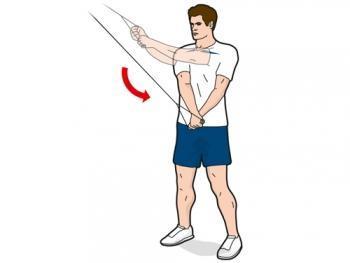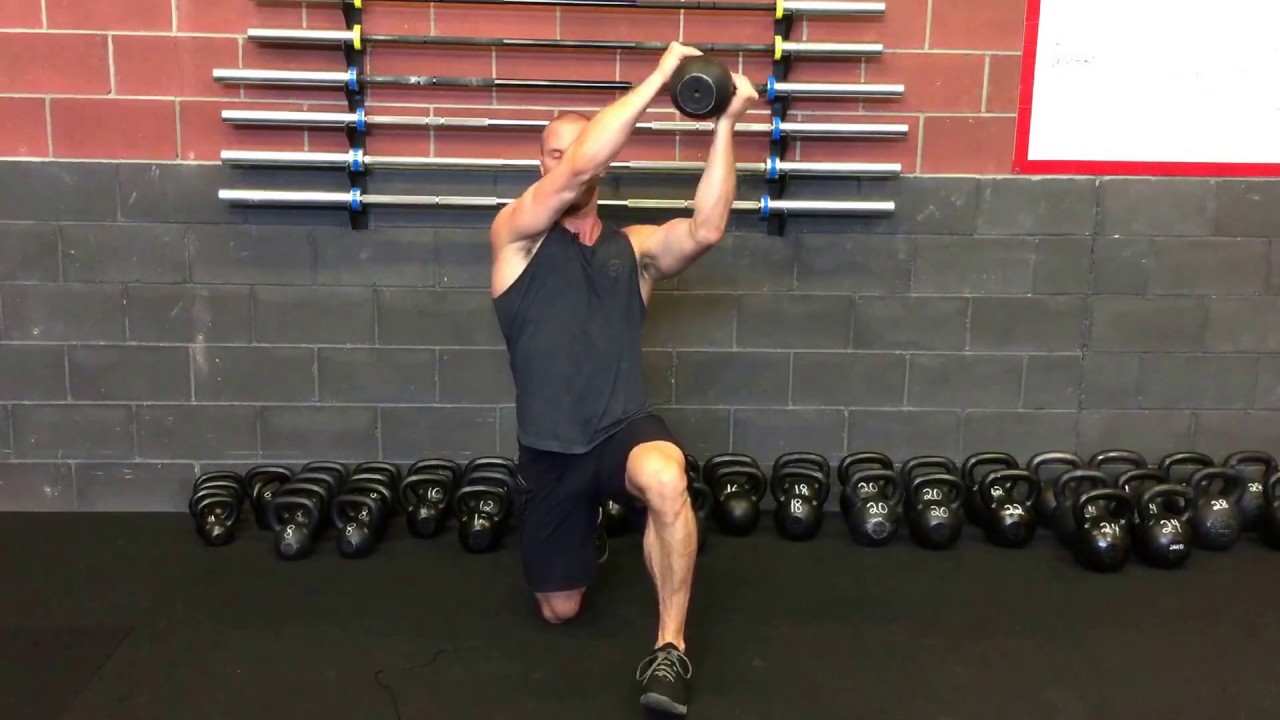The Top 10 Best Ultimate Sandbag Exercises People Get Wrong Part 2
2020-07-23
I hope in our first installment (HERE) you really went back and tried some of those drills with a whole new thought process around them. In the end, any exercise is only as powerful as the technique you use and the intent you put behind them. So, I kept that in mind with our second 5 drills that people often get wrong, but are super powerful when you get them right!
- Single Leg Deadlifts
How in the world could I claim that any exercise as foundational to so many programs as the single leg deadlift is something that people get wrong? Well, there are A LOT of ways in which people get the single leg deadlift REALLY wrong!
-Leg Too Straight: If you ask a lot of people why they perform the single leg deadlift you will hear a lot revolving around strong hamstrings and glutes. Well, if you keep the stance leg more straight, the less likely you are to bring in the glutes. That is because the glutes are actually connected to the knees via the ITBand and therefore, you need to get a good bend in the knee to get the posterior chain firing correctly.

-One Weight Instead of Two: Let’s face it, the majority of people struggle to perform single leg deadlifts because of the instability of the movement. So, many coaches default to giving their client as little weight as possible. Typically this comes in the form of giving them a singular weight (like dumbbell or kettlebell), however, this is a mistake!

You see how Jess has a good bend in her knee but keeping her shin vertical. The USB is close to her body and she is actively pulling the handles apart.
Only giving someone one weight increases the need for the lifter to resist rotation and stabilize. Plus, it doesn’t give the important feedback one can create from using two weights. This is one reason that we give people Ultimate Sandbags to start with but you can apply this to double kettlebells and dumbbells as well.
-Improper Progression: It sounds completely arrogant for me to say we invented the Sprinter Stance position (which some people call kickstand, b-stance, and staggered). How could I make such a claim? Well, watch how people progress it from that position? You see we created the Sprinter Stance to make going from one leg to two legs as incremental as any other training variable. When you watch people that just copy the Sprinter Stance fail, is they don’t know how to keep the progressions coming!
https://www.instagram.com/tv/B16GnAtHe0K/
What you sometimes see is the use of artificial stability. A common example is pushing the back foot into the wall and while you can “feel it” I explain below why it isn’t the right way to attack the single leg deadlift.
https://www.instagram.com/tv/B8ypR0PHBqx/
2. Rotational Lifts
Typically I make this a whole post in of itself, but I’m going to try to summarize much better in this format. We have to understand the following first.
-Movement Comes From The Feet First: All punching, kicking, and throwing come from the feet, not the arms and legs. In fact, it is an old saying in combat sports that you only punch with your arm if you want to hurt your arm. Power is generated by the strong pivoting of our feet and that creates a chain reaction up the body. So, it has nothing to do with the torso or arms, or legs.

-The Torso Is Meant To Be A Force Transmitter: While the trunk doesn’t create the movement, the torso has a big role to play in not allowing energy leakage and connecting the lower to upper body. Basically that is why we want to maintain a vertical trunk position which is why many of our foundational rotational exercises happen with a vertical trunk.
That means adding progression is adding more movement patterns like the hip hinge. This is where people get into all sorts of trouble. A great example is in many kettlebell rotational drills where the coach actually encourages reaching across the body to perform the movement. Such a technique cue is a MAJOR mistake!
Reaching across the body often leads to disconnecting the connection of the lats to the core and actually does very little to help rotation but does load the low back way more. There is no need to reach as the feet create the rotation and what allows tools like kettlebells to be very valuable in these progressions is they keep the load under our center of mass decreasing risk on our low back IF we perform the movement properly.
Rotation also refers to what the body is doing and NOT the load. Many coaches still misunderstand what rotation and resisting rotation looks like.
3. MAX (Multiple Axis) Drills
Since our DVRT system MAX can refer to many different movements it is easier to discuss the concept in general. Most people still sorely misunderstand the intent behind these drills. The whole goal is to have stability in the lumbar spine and below, while allowing for some thoracic movement (like happens most times in life). This is VERY advanced and needs a good foundation as well as proper intent and cuing.
https://www.instagram.com/tv/BzktT_untBi/
The cue I give people is about 20 degrees of thoracic rotation. Why 20? Well, it doesn’t sound like a lot and most people will go very small than try to over rotate the movement. If we see the bellybutton or the pelvis rotate we automatically know it is WAY too far. That also works hand in hand with the next concept.

Understanding that the lumbar spine should be stable and we only want a VERY slight turn of the thoracic spine is key. Another important cue is to keep the eyes forward which I would tell Elizabeth here.
We want to do these movements together, not really choppy t-spine twist with whatever movement we do. The reason is that when you realize that another benefit of doing this is to tap into the diagonal patterns our body prefers to use. When we do so, we load the body like a spring and teach much more efficient movement.
https://www.instagram.com/p/BvwnDJrhzof/
4. DVRT Overhead Pressing
This is one of the few times that you will see make a specific reference to the use of the Ultimate Sandbag itself. That is because this is a technique issue that is specific to the Ultimate Sandbag. As many are familiar in our DVRT system we do a lot of overhead lifting. For one, it is an incredible way to build upper body strength and functional muscle. Second, we challenge core stability and can often build better upper body mobility at the same time. The value is immense and with a tool like the Ultimate Sandbag we have some unique advantages.
-Instability: It is the number one reason I hear why people say that want to use the Ultimate Sandbag but many times left to their own devices, they actually remove the instability from the movements they are performing. Remember, the point of instability is to challenge our movement accuracy and when we take that away in making the implement more stable we lose a lot of those great teaching benefits.
DVRT UK Master, Greg Perlaki does a great job during one of his workshops showing what good overhead pressing looks like!
Having the weight on the back side of the wrist both increases the chance to injure the shoulders as well as takes away the valuable instability of the Ultimate Sandbag as DVRT Master, Steve Di Tomaso explains…
-More Friendly To The Shoulders: Having the arms and shoulders in a neutral position makes it way safer for the shoulders and helps integrate the lats and the core so we are using a smarter way of pressing to make ourselves stronger and more resilient. When people again, put the weight on the back side of their wrists they make themselves weaker, take away the instability, and increase the risk to the shoulders!
https://www.instagram.com/p/B7bRZATH5yN/
Greg shows that we can progress overhead pressing just by changing our stance. Some of these are more challenging (like being half kneeling) that the typical bilateral position. However, using the half kneeling position is a great place to teach the concepts of overhead pressing because of the immediate feedback.
5. Lifts/Chops: I get for a large amount of people lifts/chops are something pretty new. Plus, the way one does them on a cable or band is different than we teach, but for good reason. There are some huge advantages performing lifts/chops with the Ultimate Sandbag gives us over many other tools.

-Vertical & Horizontal Loading: When a band or cable is being used we are getting the load going diagonally which is foundational to what makes lifts/chops important. However, using the Ultimate Sandbag we get the diagonal motion as well as vertical loading. That means we have to be even more mindful in how we are creating the movement with our core and not really with our shoulders.
Douglas Sheppard of J and D fitness does a great break down of the cues you want to have for the DVRT lift/chop.
-Grip: So many times the gripping options the Ultimate Sandbag offers us gets overlooked, even though it plays a huge role to the overall impact of the exercise. In this case, by being able to grab onto the Ultimate Sandbag with a neutral grip and “pull apart” we engage the core more easily and help teach people how NOT to use their shoulders to create the movement.



As you can see how much I am pulling against the Ultimate Sandbag, if you try to do the same with a kettlebell, for example, you don’t get the same result. That is due to the handle being closer due to the smaller dimension of the weight, the fact it isn’t pliable, and the center of mass is below the handle. In other words it doesn’t work well. The dumbbell doesn’t work well either because as you see how Jess has to grab it, we engage the OPPOSITE muscles we want to use.
-Major Mistake…Not Locking The Arms!: With that all said, it makes this cue so essential. Which is that both arms want to be locked out as much as possible as you pull the Ultimate Sandbag apart (when we are vertical like half kneeling, or lunging we pull the USB apart. When we are on our backs like dead bugs or hip bridges we pull the handles). If we let the arms bend, tends to be more of the trail arm, we get the load in the shoulders and not the core and that takes away so many benefits from the movement. You can see below that DVRT Master, Joel Gunterman helps us show the “breaking” of the elbows we see very often and lose the effectiveness of the drills.
You see that there is more than just doing the “right” exercise that picking one. You have to know the goals and all the techniques that allow it to be highly effective and a power house exercise!
Want to have the ultimate resource on how to build a healthier, mobile, and stronger body? Check out a one place where you can learn all our methods from DVRT Rx, Progressive Kettlebell Movement, and Myofascial Integrated Training all at once…See our NEW DVRT University HERE

© 2025 Ultimate Sandbag Training. Site by Jennifer Web Design.







